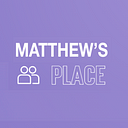How to Make Your First Vision Board
by Sassafras Lowrey
For many people, the practice of naming what you want, and visualizing it can increase motivation toward actually accomplishing your goals. The idea behind vision made up of a collage/collection of images, quotes, pictures, and words that represent things you want to accomplish. Vision boards give you an opportunity to center in your life or focus on growing and cultivating.
Why Might You Want One?
Vision boards can be created with as broad or as narrow of a focus that is useful to you and your life. Some people create vision boards for an individual art project they might be working on, or connected to a month, season, or semester. Other people create vision boards more broadly connected to goals they might have for a year, or several years. Vision boards can be focused on art you want to make, careers you would like to have, where you want to live, or even vacations you hope to go on. Vision boards can be about your life including LGBTQ themes like wanting to prioritize exploring different aspects of your identity, finding community online or (when pandemic safe to do so) in person, going to pride, or otherwise being involved in LGBTQ community and culture.
How To Make One?
The beautiful thing about a vision board, and vision board creation is that it’s a very personal creative process. There is no right way to make one, and no wrong way to make one. If you search online, you can find lots of examples of different people’s vision boards for inspiration or ideas, but don’t get caught up on trying to make your vision board look like someone else’s. There is no limit to what you can put on your vision board: words, quotes, images from magazines, photographs etc. Anything that is inspiring you, or things that you want to be intentional about, or cultivate more of in your life you can include on your vision board. You can include song lyrics that inspire you, queer icons you admire, or anything else that feels inspiring or connected to goals you have set. For actually making your vision boards you can create them physically or digitally.
Digital Options
An easy and free way to generate vision boards is to make one digitally. You can combine images in most computer programs even something like Word or PowerPoint work well for this without needing to get fancy. You can also use software like Photoshop if you have it or Canva with a free user option will give you more ability to manipulate images to resize them and make them fit better on the “board.”
Physical Options
For making a vision board on paper, you don’t need fancy supplies. You can use anything from a piece of notebook paper or printer paper or go big and tape several pieces of paper together or get a poster board to use as the background for your vision board. You can also use a cork board. For the words and images you want to include on your vision board, you can print out pictures from online, and you can also utilize pictures and images you find in magazines and newspapers. Markers, glitter, stickers, whatever art or craft supplies you have access to can be used on your vision board as well. The key is to focus on what is inspiring to you, and what you want to have more of in your life.
Keep It Close
Once you’ve made your vision board, don’t put it in a drawer and file it away. Regardless of if you create your vision board digitally or on paper — remember to keep it somewhere that you are going to be able to see it regularly. The point is to put together images and words that inspire you. If you create a digital vision board you can save your vision board as an image file on your phone/computer/tablet desktop to refer back to regularly. You can even use it as a background on your phone/computer to keep the images and ideas fresh in your mind. Physical vision boards can be hung somewhere in your home where you’ll see it on a daily basis and be reminded of your goals and priorities that you want to cultivate in your life.
About the Author:
Sassafras Lowrey’s novels and nonfiction books have been honored by organizations ranging from the American Library Association to the Lambda Literary Foundation and the Dog Writers Association of America. Sassafras’ work has appeared in The New York Times, Wired and numerous other newspapers and magazines. Sassafras has taught queer writing courses and workshops at LitReactor, the NYC Center For Fiction and at colleges, conferences, and LGBTQ youth centers across the country. www.SassafrasLowrey.com

